Is bigger always better? The answer is no, but in the case of the Shanling UA3 it certainly is as it brings quite a few improvements over the previous generation, the UA2, starting with volume buttons – quite a useful addition in today’s world of smartphones that offer no physical controls.
Disclaimer: the UA3 was provided to me free of charge by Frankie at Shanling. It retails for $109. Additional info is available on the official product page.
TL;DR: recap
| Pros |
Cons |
| + Very compact and well-built
+ Balanced output + Compatible with Nintendo Switch and Steam Deck + Support for extreme-hi-res formats + High power output |
– Some may consider it slightly bulky |
Rating: 9.5/10
Packaging & Accessories
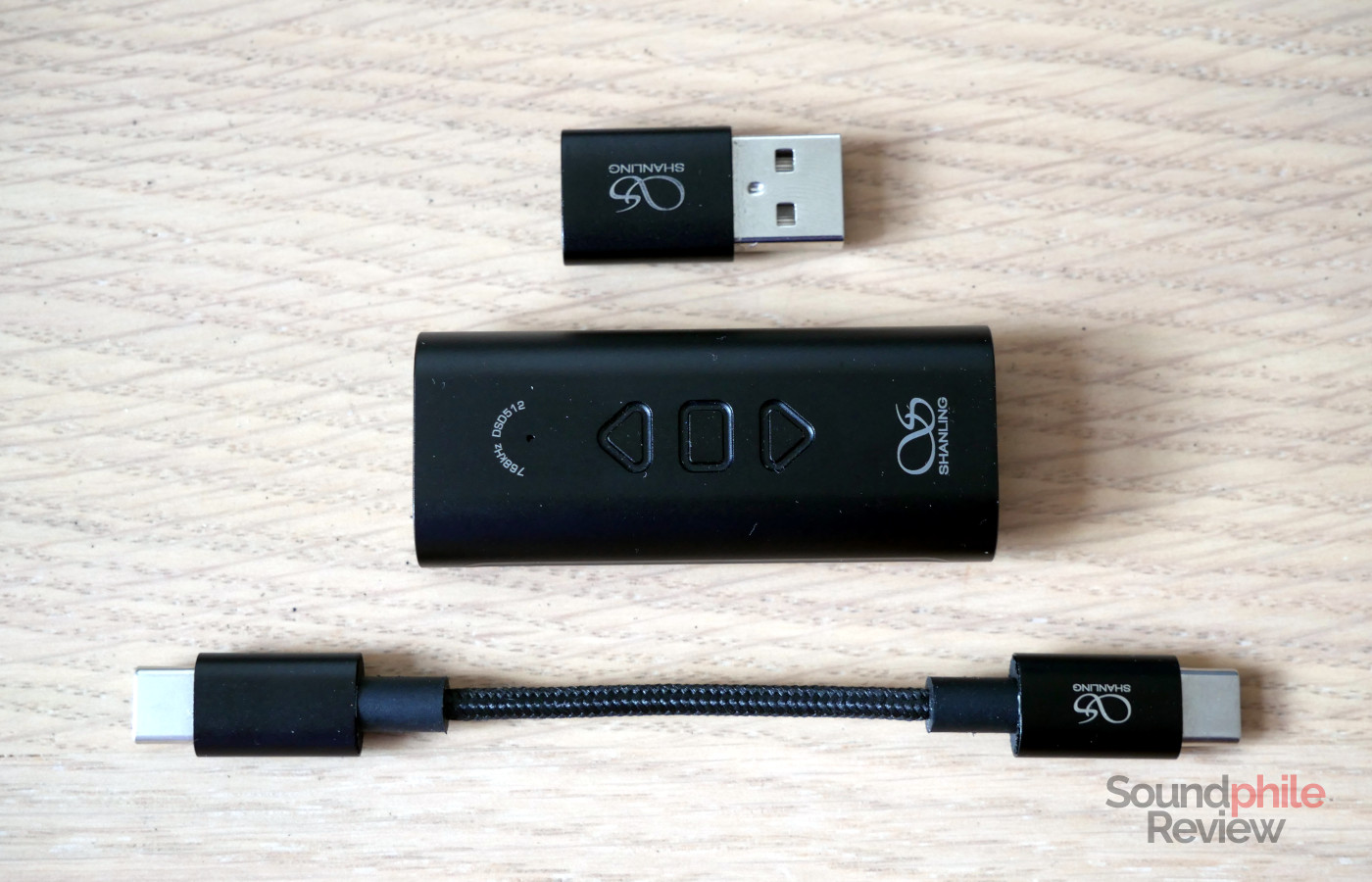
The UA3 comes in a simple cardboard box which contains the device itself, a USB-C to USB-C cable, a USB-C to USB-A adapter as well as a manual and a warranty card. There is also an optional leather case available.
Design & Build
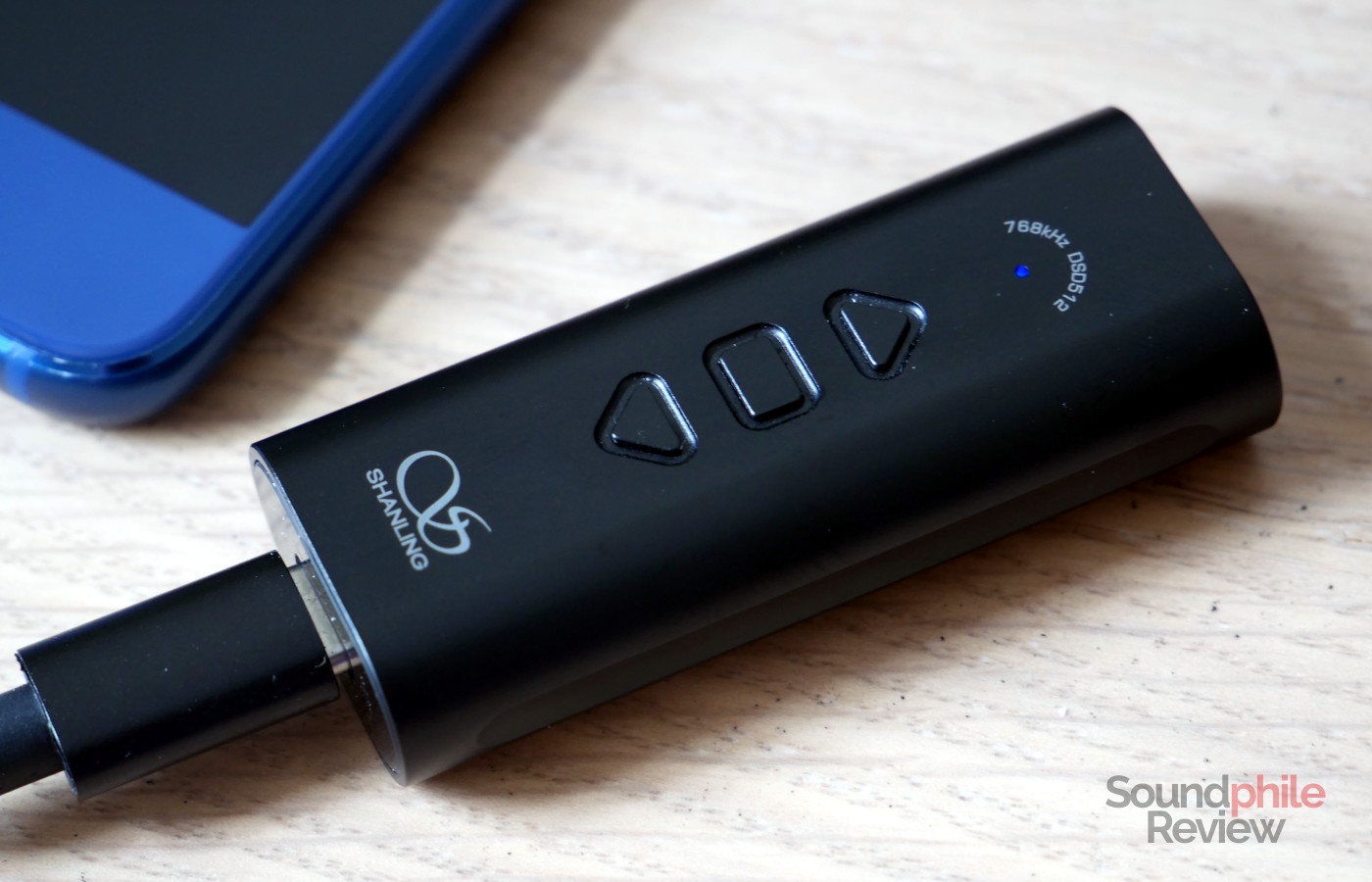
The design of the Shanling UA3 is quite simple and understated, in keeping with the tradition of the UA line-up. The UA3 is made entirely out of aluminium (from a single block, in fact) and is rectangular, with a roughly oval section. The front hosts three buttons (volume up, play/pause, volume down) as well as a status LED which uses different colours to inform the user about the sampling rate being played; the top is home to a 3.5 mm and a 4.4 mm jack connectors; on the bottom we can find a USB-C port. It’s very polished and well made, with a simplicity that lends it elegance.
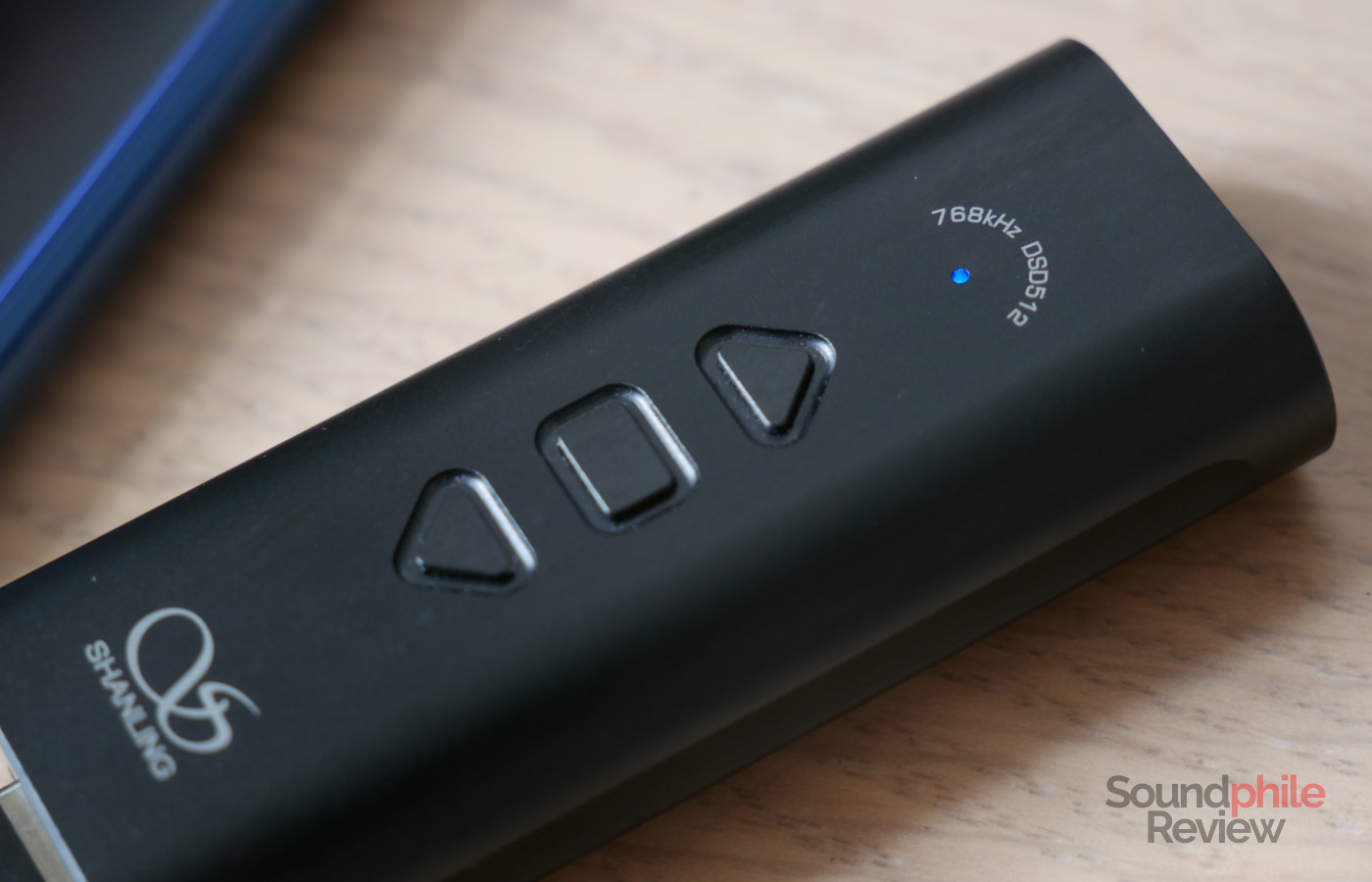
Build quality is, as usual for Shanling products, top notch. I can’t find any fault with it.
The cable is removable, so you can use any cable with a USB-C termination you wish, e.g. a Lightning to USB-C cable to use the UA3 with iPhones and iPads. The stock one is quite well made and appears to be resistant, thanks to the fabric sleeve and the rubber strain reliefs.
Features & Specs
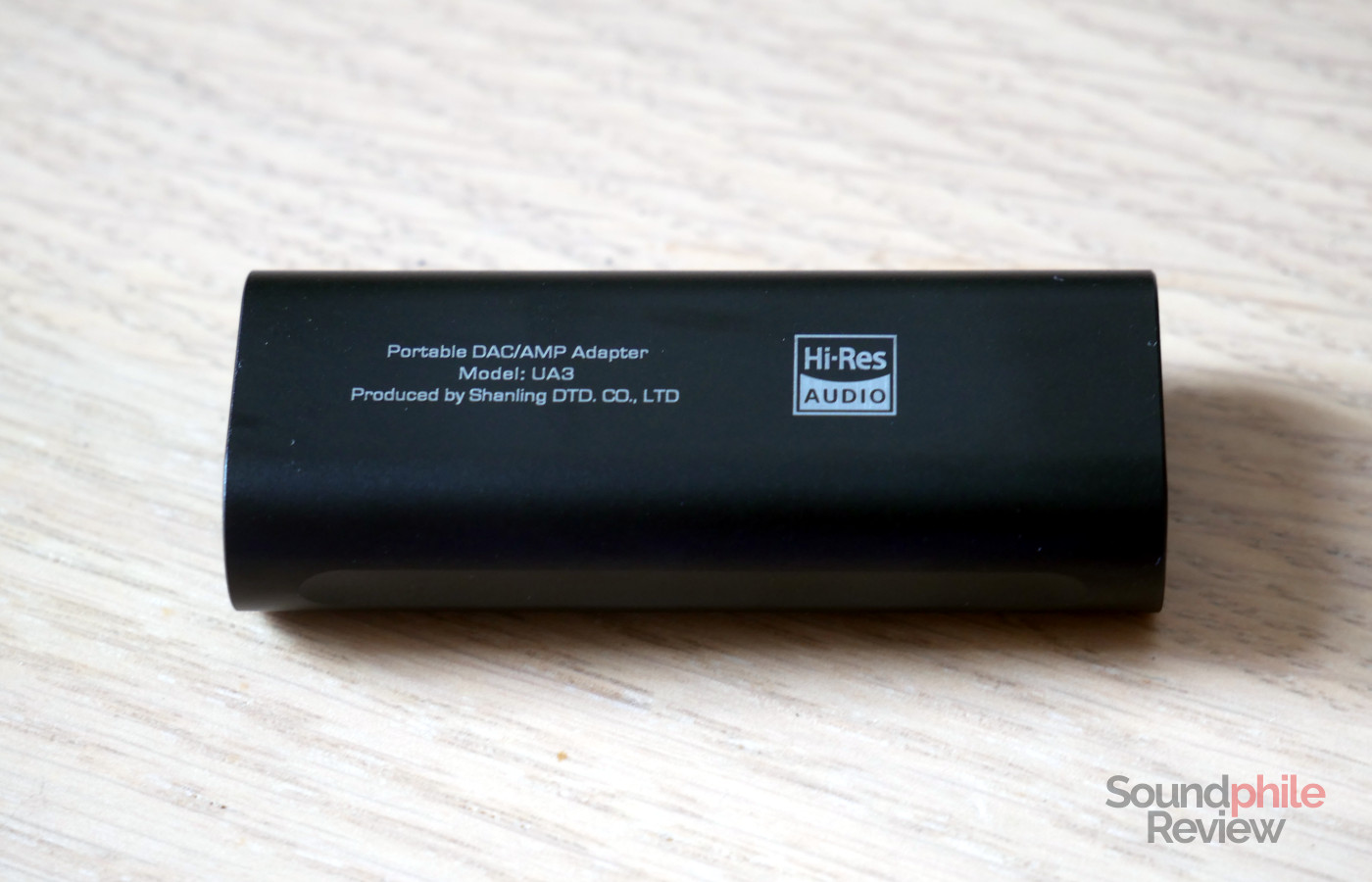
The UA3 is natively compatible with virtually any platform out there (I’m not too sure about NetBSD or Haiku, but you get the point). Pressing the central button while plugging the device in activates the USB Audio Class 1.0 mode, which makes the UA3 compatible with the Nintendo Switch. It is also compatible in a plug-and–play fashion with Linux, which means it’s also natively compatible with the Steam Deck; in that case you don’t even have to enable the UAC 1.0 for it to work, you just need to plug it in.
Shanling UA3 |
| Input | USB (up to 32 bit / 768 kHz PCM/DXD, DSD512) |
| Suitable headphones impedance | N/A |
| Output impedance | 0.4 Ω (single-ended) 0.8 Ω (balanced) |
| Maximum output power | 125 mW (32 Ω, single-ended) 211 mW (32 Ω, balanced) |
| Frequency response | 20 – 40,000 Hz (- 0.7 dB) |
| THD+N (@1 kHz) | 0.0004% (single-ended) 0.0003% (balanced) |
| SNR | 119 dB (single-ended) 120 dB (balanced) |
| Crosstalk | 80 dB (single-ended) 110 dB (balanced) |
The Shanling UA3 is based on the AK4493SEQ DAC; a return to origins after the fire that devastated the AK plants in 2020 and made a lot of audio companies switch to other DAC manufacturers. The amplification stage is managed by two Ricore RT6863 amplifiers; apparently they were designed for the ESS Sabre DACs and ADCs, but of course nothing stops one from using them with other chips. They’re the same amplifiers used on the UA2 and on the Khadas Tone Board, so at this point they are known to perform well.
Despite the small size, the UA3 supports almost every format out there as it supports PCM content up to 32 bit and 768 Hz, and DSD up to DSD512.
One thing to note is that the UA3 allows you to switch between software and hardware volume controls: by long-pressing the play/pause button you can switch between the two modes, with hardware volume control that should result in (marginally, admittedly) better sound quality, as reducing the volume using software leads to dynamics compression while doing so in hardware doesn’t.
Software
As with virtually every product made by Shanling recently, the UA3 can be set up using the Eddit Player app on Android. The application is also available on iOS, but limitations with the platform itself prevent it from allowing changing the settings of the UA3.
Sound
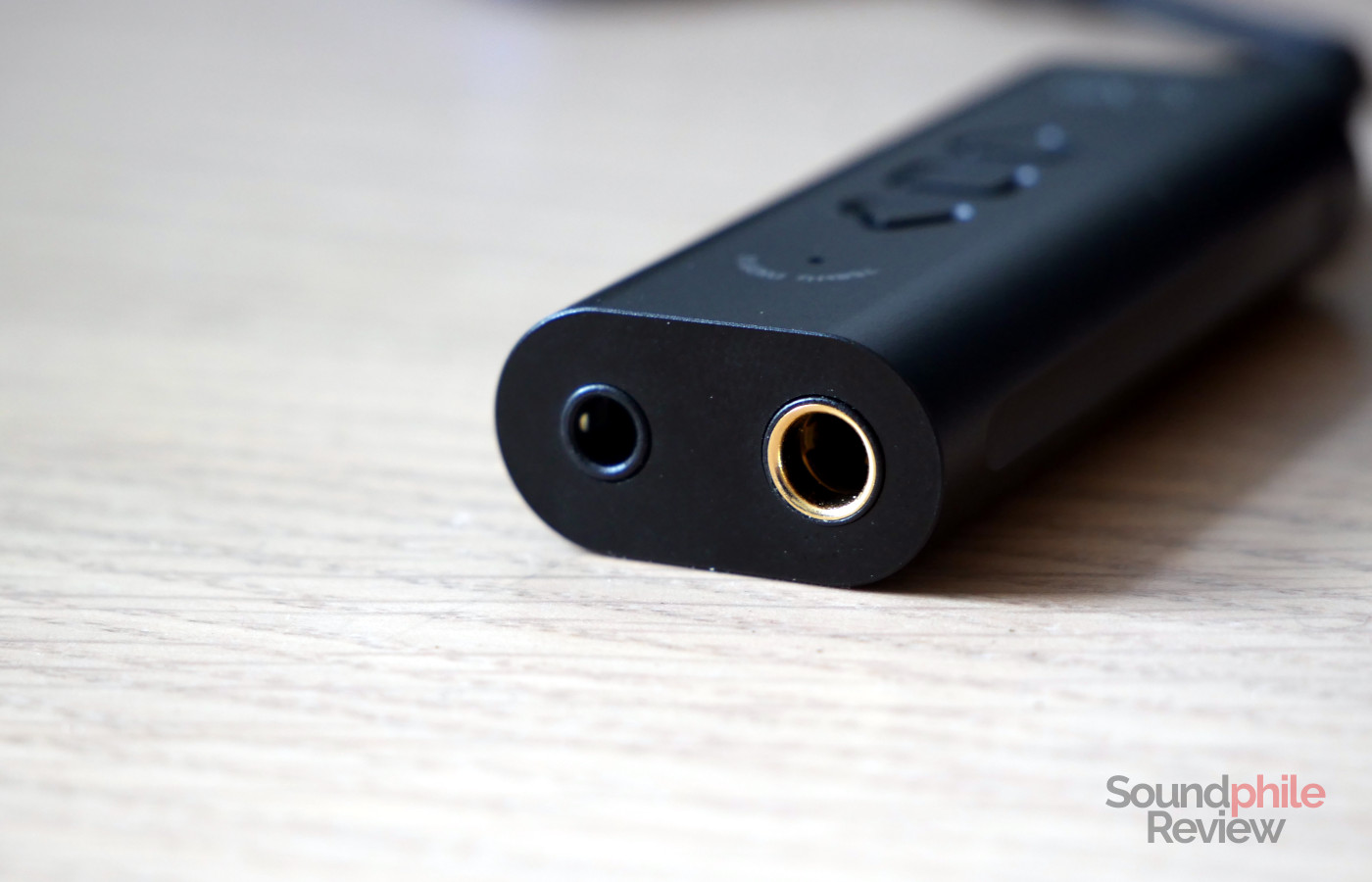
The UA3 has enough power to drive the HiFiMAN Edition XS to very high volume; in fact, using around 50% of the volume (with the single-ended connector) yields plenty loudness, to the point it’s on the upper limit of what I consider a safe listening volume. This means that there’s plenty of power to drive even relatively demanding headphones, though it can’t substitute more powerful amplifiers for the most demanding headphones.
Even when using sensitive earphones I can’t hear any background hiss, which is a a sign that Shanling did a great job when implementing the USB stage.
In terms of how it sounds, it I can’t hear any difference whatsoever with other solid-state devices I own, which means the Shanling UA3 does its job well and doesn’t colour the sound at all. There’s also no difference between the single-ended and the balanced connectors, with the exception that there is a larger volume output with the balanced one. The only case in which you might notice a difference is with high-impedance dynamic headphones, whose impedance can vary significantly, so that higher power output can therefore make a difference.
Final Thoughts
The main differences between the Shanling UA3 and the UA2 are that the former has slightly more power output from the balanced connector and it offers hardware buttons. The rest is virtually the same, with obvious differences in size and design. Overall, the UA3 appears like quite a compelling device: the previous model was already great and the small changes that the UA3 brings are actually quite good and fix the few shortcomings that were there. Considering the flexibility in terms of compatible formats, and considering the significant power output available, I would say that the Shanling UA3 is more than a DAC meant for smartphones; it can be a great option if you want to enjoy high-quality music with your computer, too, and make it your main source. It really is a great little device!

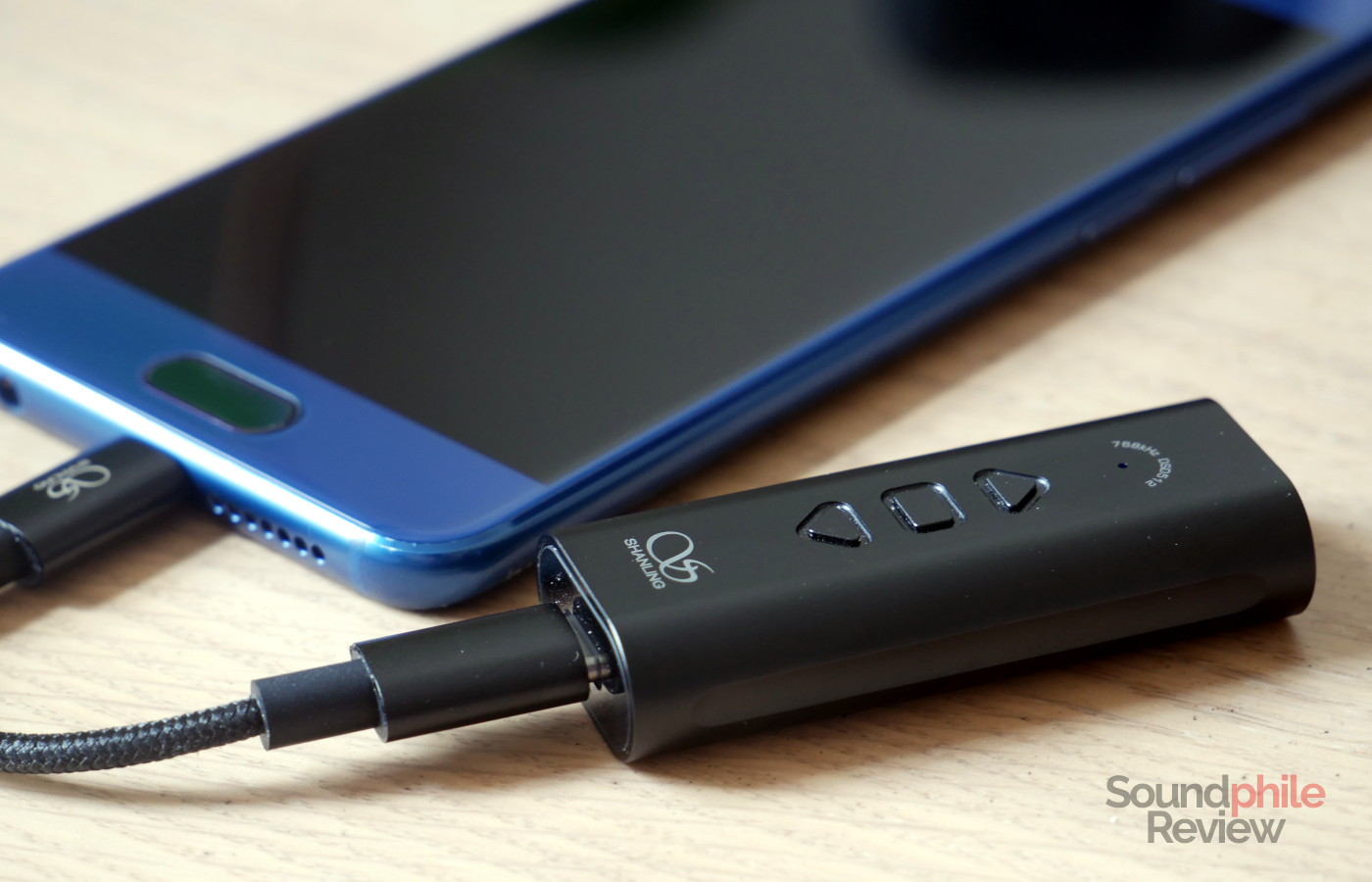


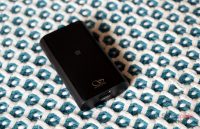
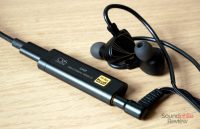
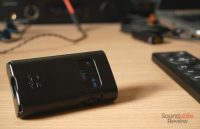


I have the UA3. It came with a different cable than yours (twisted golden one).
I agree with the sound – you are the FIRST reviewer that said there is no difference with sound. I also cannot find any difference in sound with internal DAC/AMP (phone and laptop), the Xduoo Link, iBasso DC03, and Nexum Aqua (they broke because of cable which is why I went with the UA3 for its detachable cable) and that was using Sennheiser IE 800 S and ATH-M50x. What I needed it for was power – with Wavelet on Android and increased bass it would clip when too loud which neccessisated the usage of a limiter which would get annoying when I pump up the volume and it started reducing it because of bass.
For Linux (Ubuntu 22.10 in particular) you need to copy pipewire.conf from /usr/share/pipewire to /etc/pipewire (create the /etc/pipewire folder) and uncomment then set global clock rate to 768000 with uncommenting and setting allowed clock rates to include 44100, 48000 and 768000 so sound would come from speakers. As for volume, I found it really low despite the powerful anplification the UA3 is capable of (my Android was much louder than my laptop), and overamplification would cause clipping when turned up enough regardless of the low volume so here’s the solution – type “alsamixer” in terminal, press F6 to choose UA3, pump up both volumes to max (I think it shows both volumes because of two amps built into the UA3, and turning both up increases the volume; they were set to the lowest setting on my laptop for the UA3), exit alsamixer after turning up the volume then save the alsamixer volume settings by typing “sudo alsactl store” so Ubuntu would remember the volume when disconnecting the dongle or rebooting the system. This way, you would use 768 kHz sample rate with max volume the dongle is capable of without it clipping on Ubuntu – I found that I need not pump the volume over 100% to get it loud enough this way using the 3.5mm output with ATH-M50x on my Ubuntu laptop (while using the internal sound card needs quite a bit of overamplification to get even close to matching the UA3, and it would clip, needing the usage of Easy Effects for the limiter setting). The status light lights up purple and it’s so loud despite its small size.
Since I cannot hear the difference between any external DAC/AMP and internal ones using IE 800 S and ATH-M50x (I would literally be unable to tell the difference using a blind test, save for the clipping and/or limiter on internal ones) I opted for the UA3 instead of UA5 for power and detachable cable.
I also found it handy when configuring the up/down buttons through Eddict app to change songs instead of volume (my thinking is that you set the volume once and rarely change it while skipping songs is much more often used). Changing the digital filters yielded no sound difference for me so I left it at the first setting (Sharp Roll-off).
Pardon, the cable is copper-colored, NOT gold! That’s all I have to correct from my comment.